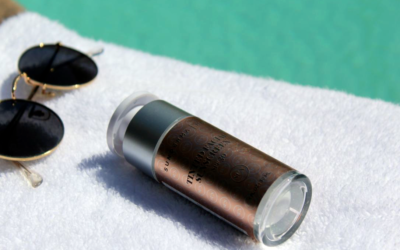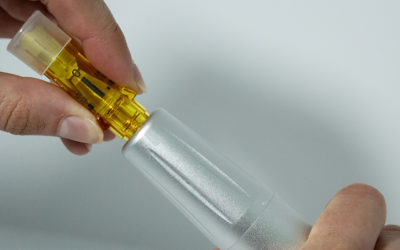Fractional Needle Dermabrasion & the New Aesthetics Market
Last updated on May 16th, 2022

The Aesthetics Market continues to grow, having emerged from the recession of 2008. Depending on the market survey, its annual growth ranges from 5-7%.
But things are not the same since the recession. Patients are more sensitive to cost and becoming reluctant to engage in procedures with prolonged downtime. Patients are showing a preference for augmentation over ablation.
A tale of two treatment philosophies: Augmentation vs Ablation; both remove fine lines and wrinkles.
Augmentation using dermal fillers thickens the dermis and minimizes fine lines and wrinkles. Dermal filler revenue has increased 10-12% annually from 2010 to present. Revenues were 1 billion in 2010 and are projected to grow to 2 billion in 2015.
While augmentation is showing spectacular growth, the ablative treatment modalities (energy delivery systems such as lasers, radio frequency, and ultrasound) are doing poorly. The revenue from energy delivery devices is decreasing 5% per annum. Revenues for the US were approximately 600 million in 2010 and are projected to decrease to 400 million by 2015. Once dominant laser companies are now reliant on service contracts and disposables.
A tale of inconvenience and downtime: Ablation of the outer layers of the face either by surgical dermabrasion or laser is becoming a practice of the past. Fractional technologies have largely replaced these dated technologies. Resurfacing has evolved into techniques of making fractional micro-injuries to trigger collagen formation. Fractional devices produce micro-injuries to the dermis with intervening healthy tissue left to supply cells and humoral factors to the wounded areas. The evolution has crossed all energy types:
1997 Fractional Dermabrasion (energy source: mechanical pressure)
2004 Fractional Laser (energy source: light to heat)
2005 Fractional Radio Frequency (energy source: oscillating electric field)
Side effects and down time have been radically reduced with fractional delivery systems. Fractionation of the injury also shifts the mechanism of action from ablative leveling of the skin to autologous collagen production thickening the skin.
Autologous collagen fillers: Micro-injuries produce a micro-wound healing environment. If minimal levels of inflammation are maintained, these micro-injuries heal without epidermal pigment changes or scarring. Controlled wound healing produces collagen that thickens the dermis and minimizes fine lines. In essence, fractional micro-injuries produce the same volumizing, beneficial effect as exogenous fillers, but using the patient’s own mechanisms of wound healing and collagen production. Fillers may produce inflammation, fibrosis, and have occasional recalls but is not so for the body’s collagen.
Fractional dermabrasion produces more collagen than intense pulsed light (Kim et al., 2011). Fractional dermabrasion produces collagen comparable to ablative and fractional lasers (Park et al., 2012; Aust et al., 2008; Aust et al., 2010). The new collagen produced by needle dermabrasion thickens and softens the skin, reduces fine lines and wrinkles, and normalizes the contour of atrophic scars. These effects occur gradually over 30 days, so there is no instant gratification as seen with dermal fillers. However, the dermabrasion effect lasts at least 2 years (Aust et al., 2010) unlike absorbable fillers.
Fractional dermabrasion is safer than fractional laser in terms of abnormal pigmentation side effects. The amount of inflammation produced by micro-injuries is related to the occurrence of post inflammatory hyper-pigmentation (PIH). Only one reported case of PIH exists in the entire fractional dermabrasion literature (Majid et al., 2009). The incidence of PIH for fractional lasers goes from 12 to 33% for Fitz IV and V. The difference: more inflammation results from the ablation / coagulation / necrosis of the micro-injuries from the laser. Fractional dermabrasion has less down time than fractional laser treatments. Mild erythema after a treatment dissipates in minutes, not days.
Fractional dermabrasion is less expensive to administer and more operator independent than any laser. A Dermapen costs 20X less than a CO2 fractional laser. A Dermapen never results in additional infrastructure, such as three-phase 220 Volt supplies, a dedicated room or enhanced ventilation. The Dermapen is small in size and fits nicely in the white coat pocket. Education and certification for micro-needling costs a fraction of that for a fractional laser. Dermapen offers education and certification for under 1K through industry partner NeedleLogics, with courses lasting one day. Compare this to the training required for a laser which are more lengthy.
With the move to less invasive and inconvenient augmentative procedures, the success of Dermapen is not surprising. Needle dermabrasion and dermal fillers both result in dermal thickening and this thickening reduces surface irregularities like fine lines or scars. Ablation used to level out wrinkles and atrophic scars is now a historical footnote. And since micro-injuries are not all the same, the once dominant laser with its increased inflammatory profile has seen more profitable days.
- Kim SE, Lee JH, Kwon HB, Ahn BJ, Lee AY (2011) Greater collagen deposited with the micro-needle therapy system than with intense pulsed light. Dermatol Surg 37: 336-341.
- Aust MC, Fernandes D, Kolokythas P, Kaplan HM, Vogt PM (2008) Percutaneous collagen induction therapy: an alternative treatment for scars, wrinkles, and skin laxity. Plast Reconstr Surg 121: 1421-1429.
- Aust MC, Reimers K, Gohritz A, Jahn S, Stahl F, Repenning C, Scheper T, Altintas Ma, Schwaiger N, Redeker J, Voggt PM (2010) Scarless skin rejuvenation: fact or fiction? Clin Exp Dermatol 35: 437-439
- Park KY, Kim HK, Kim SE, Kim BJ, Kim MN (2012) Treatment of striae distensae using needling therapy: A pilot study. Dermatol Surg: epub ahead of print
- Majid I (2009) Microneedling therapy in atrophic facial scars: An objective assessment. J Cut Aesthetic Surg 2:26-30.
- Graber EM, Tanzi EL, Alster TS (2008) Side effects and complications of fractional laser photothermolysis: Experience with 961 patients. Dermatol Surg 34: 301-307.
Find certified Dermapen microneedling professionals
Dermapen® Microneedling Devices are exclusively sold to Medical and Skin Care Professionals. Use the form to the right to get started finding a Certified Dermapen® practitioner in your area.
Enter your location information to find a Dermapen Skin Care Professional.
Want to become a Dermapen Practitioner?
Medical Clinics and Spas can offer their patients the worlds most advanced microneedling treatments with Dermapen
Microneedling Treatments
The Dermapen Microneedling Pen provides an unparalleled response through the segmented delivery of microneedles, creating micro injuries to the epidermis (outer layer of skin) and dermis (the inner layer of skin). As a result, the micro injuries encourage the body’s innate ability to repair itself.
Every Dermapen tip is outfitted with 12 needles and features our patented technologies, which include SureSpace™ and SafLok™. Accordingly, these safety enhancements can be found in every Dermapen needle tip and pen.
Furthermore, by using SureSpace™ and SafLok™ microneedling pen technologies, practitioners can deliver their patients the safest microneedling treatment possible, while getting the best microneedling results for their patients.



